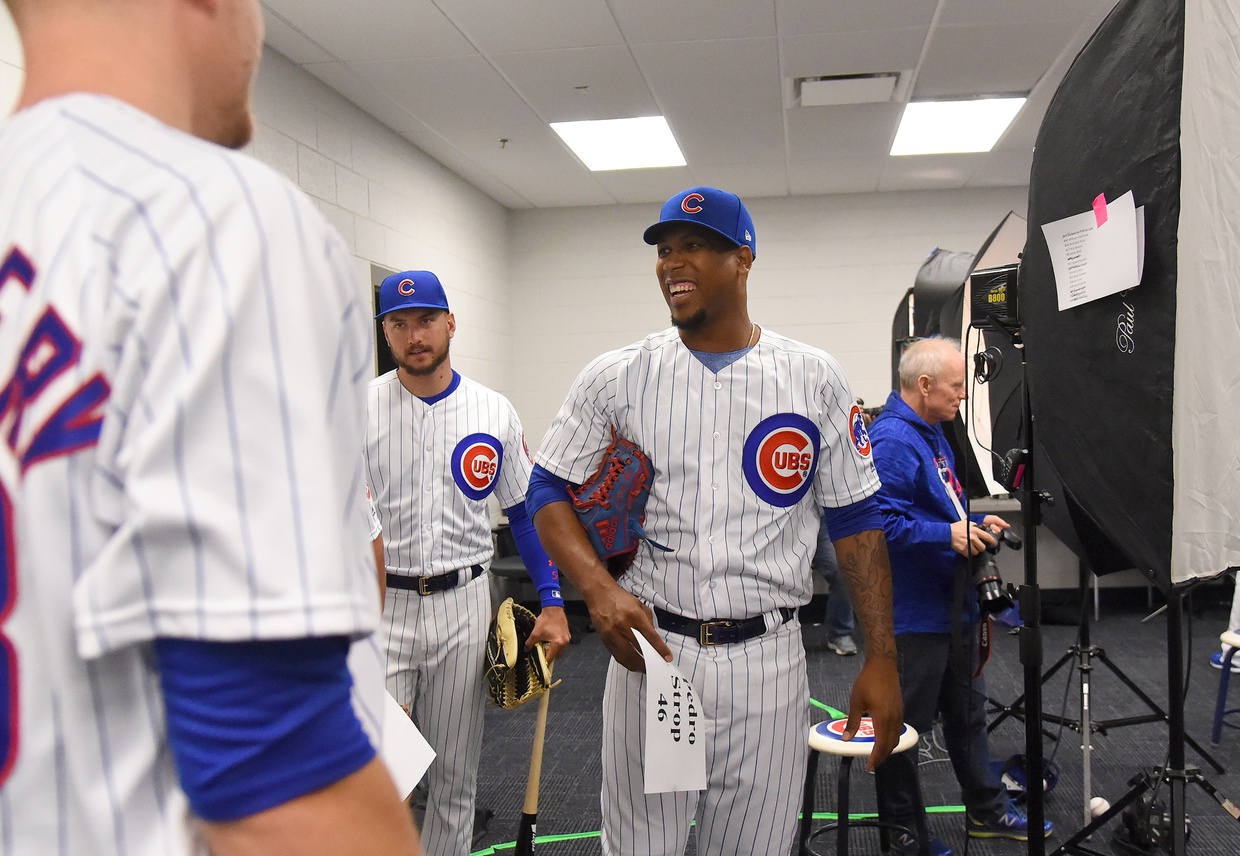I’ll go ahead and apologize for Pedro Strop’s outing against St. Louis last week. I proposed an article on his early season success a week ago; we put it on the schedule for today. Only then did I remember the Cardinals were coming to town—and that I’d just dared them to bring their Voodoo with them.
That one inning of work aside, I think we can still call Strop’s early-season work successful—especially when we take into account some of the struggles that have afflicted other members of the pitching staff. A 3.00 ERA and 91 FIP- are nothing to sneeze at even if they’re less pristine than this time last week.
So far—and we’re still in the season of small sample sizes, especially for relievers, so all kinds of caveats remain—Strop has done this by managing contact quality. Through his nine innings pitched this season, Strop is inducing weak contact at a career-best 32 percent (from 22.4 percent in 2017 and a 19.3 percent career rate). Both medium (44 percent, down from 49.4) and hard contact (24 percent, down from 28 percent) have declined in tandem.
In fact, not only is Strop inducing the weakest contact of his career, he’s also allowing more contact. This season’s 71.15 percent is higher than his career norm and up 7.5 points from last season. This is true both in the zone and outside the zone.
The O-Contact rate may be important. While the overall swing rate against Strop’s pitches is down this year, for pitches outside the strike zone, it’s up. Numbers like this allow you to look at opposing batters’ pull rate against Strop—currently 56 percent, compared to a career rate of 38.55 percent—and nod rather than recoil. Batters are chasing pitches out of the zone, pitches they can hit, but can’t square up. They’re rolling over on them.
This has affected Strop’s strikeout rate and his walk rate. Both are down slightly from last year—he’s inducing fewer whiffs, but batters are taking even fewer balls. The result has been a slight uptick in in K-BB%: he currently sits at 16.2 percent, up from last year’s career-typical 15.6 percent.
Strop, so far, looks like a slightly different pitcher than in years past. It’s not that he’s become, suddenly, a contact-manager, but that he’s finding greater success at managing contact. He’s doing this without sacrificing much in the way of strikeout rate (24.3 percent so far, down from last year’s 26 percent) or strikeout efficiency.
He’s finding this success while also managing a decrease in his velocity across the board:
Strop isn’t a slow-starter, either. His April velocities have usually been pretty indicative of pitch velocities for each of the next five months. Maybe he’s just warming up still—he did deal with soreness in his left calf that limited his spring training work—but we should be prepared for that not to be the case. But it’s also possible that he’s already adjusted to a loss of velocity.
There are other, less positive signs, too. I’d feel more confident in everything I’d written if his groundball rate hadn’t dropped to 50 percent from last year’s 59.1 percent at the same time that his line drive rate has nearly doubled—from 10.5 percent to 20.8 percent. That’s a lot more balls hit on a line and a lot fewer killing worms. These aren’t numbers you’d expect to see from someone who has improved contact management outcomes.
But here we are anyway. By next month, any (or all) of these could have changed. But for now, Strop’s routine in the Small Sample Size Theater has been working.
Lead photo courtesy Jayne Kamin-Oncea—USA Today Sports

